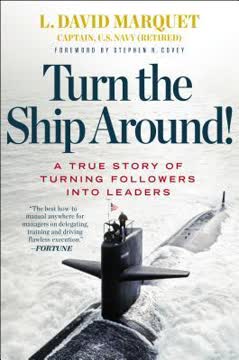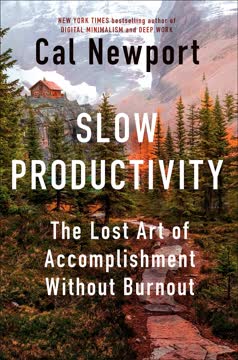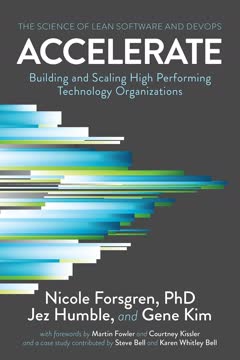Key Takeaways
1. Total Motivation (ToMo) drives high performance through adaptive behaviors
"You can't escape it. If just one minute of priming can boost Steve and his group's performance, imagine the impact of a culture that has been systematically designed to maximize the performance of every person at every level."
ToMo is the key to success. It's a measure of an individual's or organization's motivation based on six key factors: play, purpose, potential, emotional pressure, economic pressure, and inertia. High ToMo leads to increased adaptive performance, which is crucial in today's rapidly changing business environment.
ToMo impacts various aspects of performance:
- Creativity and innovation
- Problem-solving abilities
- Persistence and resilience
- Customer satisfaction
- Employee retention
Organizations with high ToMo, such as Southwest Airlines and Whole Foods, consistently outperform their competitors in customer satisfaction, employee engagement, and financial results.
2. Play, purpose, and potential are direct motives that enhance performance
"Play is what compels you to take up hobbies, from solving crossword puzzles to making scrapbooks to mixing music."
Direct motives fuel intrinsic motivation. These motives are directly connected to the work itself and lead to higher levels of performance and job satisfaction.
- Play: Enjoying the work for its own sake, finding curiosity and experimentation in tasks
- Purpose: Believing in the impact and value of the work being done
- Potential: Seeing how the work contributes to personal growth and future goals
Companies like Google and 3M leverage play by allowing employees to spend a portion of their time on self-directed projects. Organizations with strong missions, like Medtronic, tap into purpose by connecting employees directly with the patients they help. Potential is harnessed through robust career development programs and mentorship opportunities.
3. Emotional pressure, economic pressure, and inertia are indirect motives that hinder performance
"When your motive to work is emotional pressure, your performance tends to suffer."
Indirect motives can be detrimental. These motives are external to the work itself and often lead to decreased performance, creativity, and job satisfaction.
- Emotional pressure: Working due to fear, guilt, or shame
- Economic pressure: Working solely for rewards or to avoid punishment
- Inertia: Continuing to work without a clear reason or motivation
Examples of harmful indirect motives include:
- Overly competitive performance rankings (e.g., Microsoft's former stack ranking system)
- Purely commission-based sales structures
- Rigid, bureaucratic work environments that stifle innovation
To improve performance, organizations should focus on reducing these indirect motives while enhancing direct motives.
4. The ToMo factor measures and predicts organizational culture strength
"The total motivation factor is the ultimate culture-building tool, the compass you've always needed to make sure your culture is heading in the right direction."
Measuring culture is now possible. The ToMo factor provides a quantitative measure of an organization's culture strength, allowing leaders to identify areas for improvement and track progress over time.
Key aspects of the ToMo factor:
- Calculated using a simple survey measuring the six motives
- Ranges from -100 to 100, with higher scores indicating stronger cultures
- Correlates strongly with various performance metrics
By regularly measuring and analyzing ToMo, organizations can:
- Identify cultural strengths and weaknesses
- Develop targeted interventions to improve culture
- Track the impact of cultural initiatives over time
- Compare performance across teams, departments, or competitors
5. Adaptive performance is crucial for organizational success in volatile environments
"Adaptive organizations are truly built to win."
Adaptability is key to survival. In today's rapidly changing business environment, organizations must balance tactical performance (executing existing plans) with adaptive performance (responding to unexpected challenges and opportunities).
Characteristics of adaptive organizations:
- Encourage experimentation and learning from failure
- Foster open communication and idea-sharing
- Empower employees to make decisions
- Regularly reassess and adjust strategies
Examples of adaptive performance:
- Southwest Airlines' ability to maintain profitability despite industry volatility
- Toyota's continuous improvement philosophy (kaizen)
- W.L. Gore's innovative, flat organizational structure
Organizations that prioritize adaptability are better equipped to navigate uncertainty and capitalize on emerging opportunities.
6. Leadership behaviors significantly impact employee ToMo and performance
"By turning all fourteen of the fire starter behaviors mentioned earlier into a simple, easy-to-implement routine, you can integrate all fourteen of the fire starter behaviors mentioned earlier into a simple, easy-to-implement routine."
Leaders shape culture. The behaviors and attitudes of leaders have a profound impact on employee motivation and performance. "Fire starter" leaders who foster high ToMo exhibit specific behaviors that enhance direct motives and minimize indirect motives.
Key leadership behaviors that boost ToMo:
- Providing autonomy and encouraging experimentation
- Connecting work to a larger purpose or mission
- Offering opportunities for growth and development
- Reducing fear of failure and encouraging risk-taking
- Recognizing and celebrating achievements
Organizations can develop high-ToMo leaders through targeted training programs, mentorship, and by incorporating ToMo principles into leadership selection and evaluation processes.
7. Well-designed roles and career ladders boost ToMo and adaptive performance
"Designing a job for tactical performance is relatively straightforward. We know how to turn a strategy into a process, and that process into a job description. It is much harder to design a job that supports adaptive performance and total motivation."
Role design matters. The way jobs are structured and career paths are designed has a significant impact on employee motivation and performance. Well-crafted roles provide opportunities for play, purpose, and potential while minimizing indirect motives.
Elements of effective role design:
- Clear connection between work and impact (theory of impact)
- Opportunities for experimentation and learning
- Autonomy in decision-making
- Regular feedback and reflection
Career ladder best practices:
- Offer multiple paths for advancement (e.g., technical, managerial, customer-focused)
- Clearly define skills and expectations for each level
- Provide opportunities for growth and learning at every stage
- Reward progression with increased ToMo (not just compensation)
8. Compensation systems must balance tactical and adaptive performance incentives
"Like all motivators, pay-for-performance is neither inherently good nor inherently bad. Depending upon the circumstances, it can be either, both, or neither."
Compensation is complex. While traditional pay-for-performance systems can boost short-term tactical performance, they often undermine adaptive performance and long-term success. Organizations must design compensation systems that balance both types of performance and align with ToMo principles.
Considerations for effective compensation systems:
- Reward both individual and team performance
- Incorporate measures of adaptive performance (e.g., innovation, problem-solving)
- Avoid creating perverse incentives or "cobra effects"
- Ensure fairness and transparency
Examples of innovative compensation approaches:
- Whole Foods' team-based bonus system
- REI's focus on profit-sharing rather than individual bonuses
- Buffer's transparent salary formula
9. Building a high-ToMo culture requires a systematic, science-based approach
"Primed to Perform shows you how to build a genuinely great culture."
Culture-building is a science. Creating and maintaining a high-ToMo culture requires a systematic approach based on scientific principles. Organizations must intentionally design and manage all aspects of their culture to maximize adaptive performance.
Key elements of a systematic culture-building approach:
- Measure and track ToMo regularly
- Align all organizational systems (e.g., hiring, performance management, compensation) with ToMo principles
- Train leaders at all levels in ToMo concepts and behaviors
- Create a dedicated team of "fire watchers" to oversee culture initiatives
- Continuously experiment and refine cultural practices
By adopting a scientific, data-driven approach to culture, organizations can create sustainable high-performance environments that adapt and thrive in the face of change.
Last updated:
FAQ
What's Primed to Perform about?
- Focus on Culture: Primed to Perform by Neel Doshi and Lindsay McGregor explores building high-performing cultures through the science of total motivation (ToMo).
- Total Motivation Concept: It introduces ToMo, which includes six motives that drive performance: play, purpose, potential (direct motives) and emotional pressure, economic pressure, inertia (indirect motives).
- Practical Framework: The book provides a framework for leaders to assess and improve organizational culture, ensuring employees are motivated to perform at their best.
Why should I read Primed to Perform?
- Evidence-Based Insights: The book is grounded in two decades of research, offering reliable and actionable insights.
- Transformative Tools: It provides practical tools and methods for leaders to create and sustain high-performing cultures.
- Addressing Challenges: The book tackles common cultural challenges, offering strategies to foster adaptability and innovation.
What are the key takeaways of Primed to Perform?
- Importance of Culture: Culture is a critical driver of performance, and actively managing it can lead to success.
- Direct vs. Indirect Motives: Understanding the difference between direct and indirect motives is essential for enhancing performance.
- Total Motivation Factor: The ToMo factor is a measurable concept that helps assess cultural health and identify improvement areas.
What is the Total Motivation Factor (ToMo) in Primed to Perform?
- Measurement Tool: ToMo quantifies the balance of direct and indirect motives within an organization, ranging from -100 to 100.
- Predictive of Performance: A higher ToMo score correlates with better adaptive performance, indicating higher creativity and engagement.
- Calculation Method: Organizations can use a survey to assess employees' feelings about the six motives, identifying cultural strengths and weaknesses.
How does Primed to Perform define direct and indirect motives?
- Direct Motives: Include play (enjoyment), purpose (valuing outcomes), and potential (personal growth), enhancing performance.
- Indirect Motives: Consist of emotional pressure, economic pressure, and inertia, which typically reduce performance.
- Impact on Performance: Organizations should focus on enhancing direct motives while minimizing indirect ones for a thriving culture.
How can I apply the concepts from Primed to Perform in my organization?
- Conduct a ToMo Survey: Measure the total motivation factor to understand your current cultural health.
- Identify Improvement Areas: Analyze survey results to pinpoint lacking motives and focus areas like leadership or role design.
- Set Aspirational Goals: Establish clear goals for improving ToMo and develop a plan to achieve them.
What leadership behaviors are essential for creating a high-ToMo culture according to Primed to Perform?
- Encouraging Play: Inspire curiosity and experimentation by providing time and space for creative thinking.
- Fostering Purpose: Help employees see the importance of their work, aligning individual goals with the organization’s mission.
- Supporting Potential: Link employees’ work to personal goals and provide growth opportunities, making them feel valued.
What is the importance of role design in Primed to Perform?
- Role Design's Impact: Effective role design maximizes total motivation and adaptive performance.
- Creating a Playground: Encourage exploration and learning from failures, fostering creativity and innovation.
- Clarity in Roles: Clear role definitions help employees understand responsibilities and exercise autonomy.
How does Primed to Perform suggest organizations can avoid the blame bias?
- Assume Positive Intent: Start by assuming employees have good intentions, reducing the tendency to blame.
- Focus on Context: Examine the context of performance issues, looking for systemic problems rather than individual faults.
- Use the REAP Model: Employ the REAP model (Remember, Explain, Ask, Plan) for constructive feedback and root cause identification.
What role does identity play in building a high-performing culture according to Primed to Perform?
- Foundation of Purpose: An organization’s identity provides purpose and direction, enhancing the purpose motive.
- Behavioral Code: A strong identity includes a behavioral code for decision-making and problem-solving.
- Heritage and Traditions: Celebrating heritage and establishing traditions create a sense of belonging and shared values.
What are some examples of companies that successfully implemented ToMo principles from Primed to Perform?
- Whole Foods Market: Empowers employees to make decisions, fostering a sense of purpose and ownership.
- Toyota: Uses the andon cord system to promote experimentation and continuous improvement.
- Starbucks: Balances tactical and adaptive performance, emphasizing training and customer engagement.
What are the best quotes from Primed to Perform and what do they mean?
- “Taylorism has had its day.”: Suggests traditional management practices are outdated, advocating for adaptability and engagement.
- “Every single job should have this cycle designed right into the job itself.”: Emphasizes integrating the performance cycle into job design for continuous learning.
- “You are our fire watchers, who make sure the fire does not go out.”: Highlights the role of culture champions in maintaining a high-performing culture.
Review Summary
Primed to Perform receives mostly positive reviews, with an average rating of 4.15/5. Readers praise its insights on workplace culture, motivation, and performance. Many find the ToMo (Total Motivation) model particularly useful. The book's strengths include its scientific approach, practical tools, and case studies. Some readers note that the middle and latter sections are less engaging than the first part. A few criticize the repetitiveness and academic writing style. Overall, reviewers recommend it for leaders and managers seeking to improve team performance and culture.
Similar Books










Download PDF
Download EPUB
.epub digital book format is ideal for reading ebooks on phones, tablets, and e-readers.




